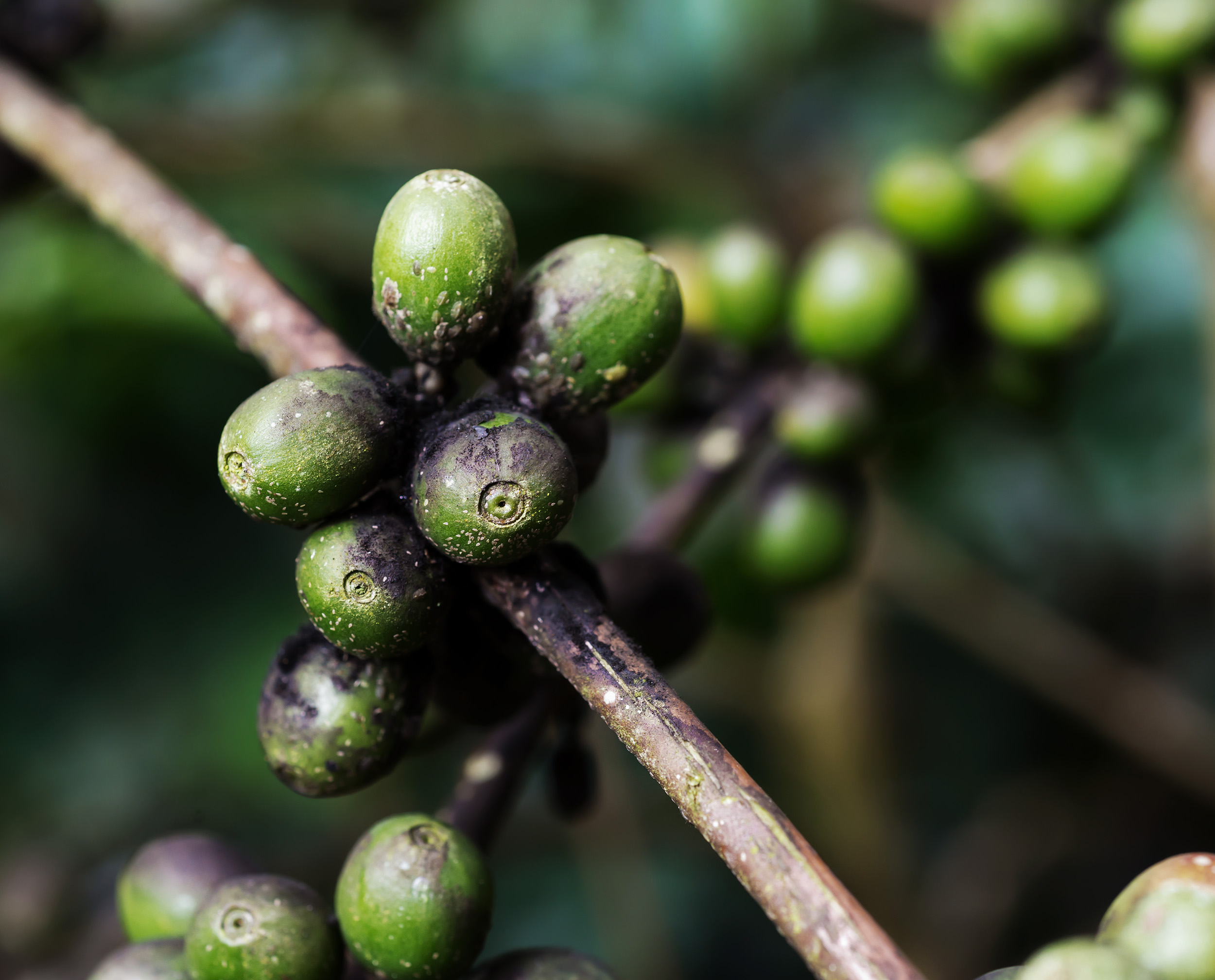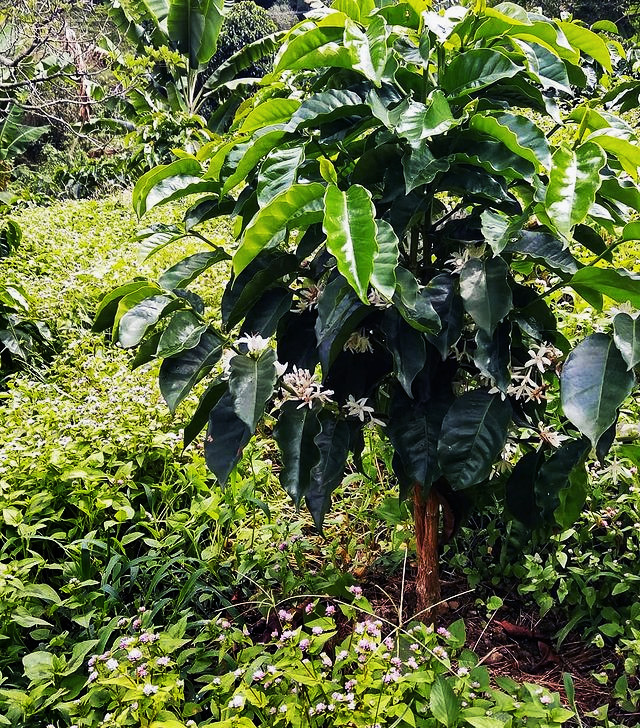Following the success of the Colombia and Castillo breeding programs, Cenicafé continued to pursue a strategy of developing varieties that have multi-line resistance to rust and other diseases. One of Cenicafé’s goals was to develop more lines that are resistant to coffee berry disease (CBD), which is caused by the fungus Colletotrichum kahawae. This devastating pathogen has not yet been found in the Americas, but it causes significant crop losses in Africa, and only about 60% of Castillo lines are resistant to the disease (Cortina et al 2013). Cenicafé’s plant breeders sought to develop a variety with stronger resistance to CBD before the disease arrived in Colombia — just as they had done to defend their coffee plants from leaf rust.
 Coffee berry disease causes severe crop losses in east Africa.
Coffee berry disease causes severe crop losses in east Africa.
Cenicafé released the new hybrid variety Cenicafé 1 in 2016. Like Colombia and Castillo, it is a multi-line variety, with eight lines included in the initial release (Flórez Ramos et al 2016). The new variety has a potential for yield and quality similar to Castillo but a shorter growth habit similar to Caturra, which allows for denser planting. It also produces larger seeds than Castillo; this significantly benefits producers, who earn more for beans graded Supremo (screen size 18 and above) (FNC 2016).
 A 10-month-old Cenicafé 1 tree growing at San Antonio de la Piedra
A 10-month-old Cenicafé 1 tree growing at San Antonio de la Piedra
Since CBD hasn’t yet reached Colombia, it’s not possible to test for resistance to the disease directly. Instead, the researchers rely on molecular markers of resistance — fragments of DNA that indicate a resistance gene is likely to be present. Each of the lines in Cenicafé 1 carries at least one such marker, linked to a gene that provides durable resistance to CBD in Kenyan varieties such as Ruiru 11 (Flórez Ramos et al 2016).